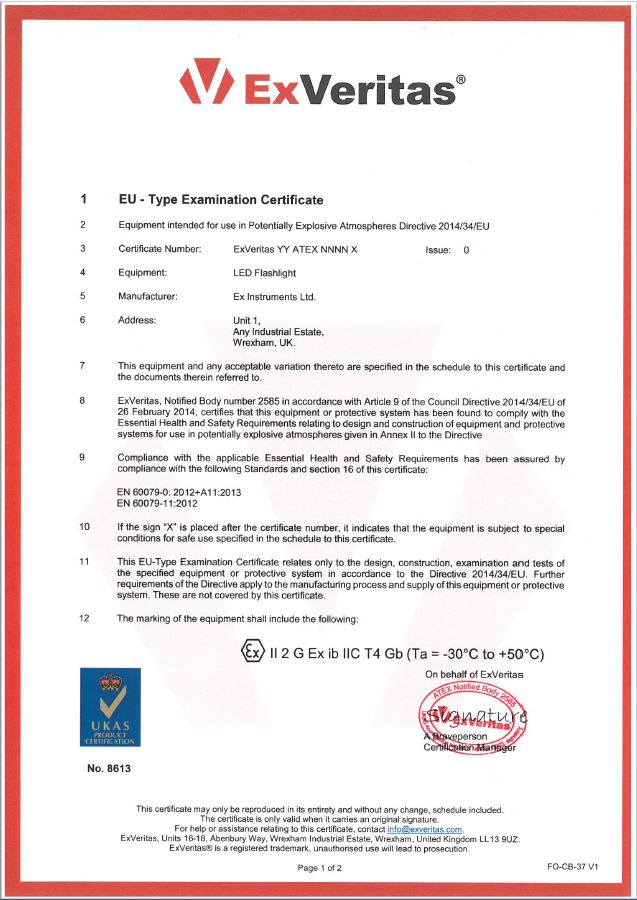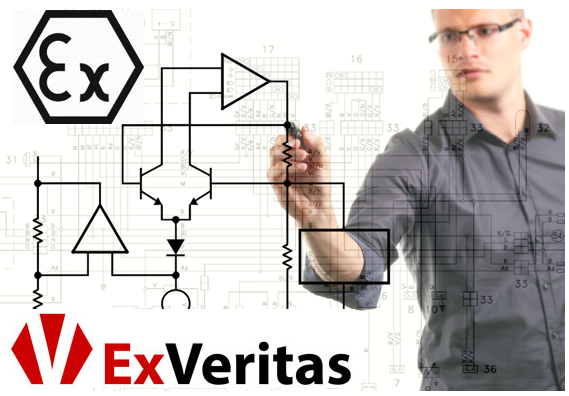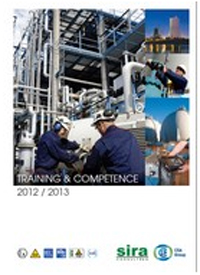The Requirements for ATEX/UKCA
One of the most misunderstood aspects of ATEX and UKCA Ex Certification is the ‘blend’ of Self Certification and Notified/Approved Body Certification. There are many routes to certification, and this is explained in legislative documents, but for end users and manufacturers it can be very confusing. An example of the routes to conformity is shown below….

So what exactly does this mean?
- Electrical equipment that is CAT 1 and CAT 2 (normally for use in in Zone 0 or 1) requires Notified Body Certification for the EU and UK Approved Body Certification for the UK (no self-certification is allowed unless the equipment is Simple Apparatus*)
- Non-electrical equipment for CAT 1 (Zone 0)requires Notified/Approved Body Certification.
- Equipment that is purely non-electrical requires a ‘technical file lodging’ with a Notified/Approved Body for CAT 2 (Zone 1) and the Notified/Approved Body will normally issue proof or receipt.
- All ‘Protective Systems’ (mitigation) require Notified/Approved Body Certification
- Associated Apparatus (even in the safe area) may require Notified/Approved Body Certification
- Simple Apparatus can be self-declared even for Zone 0 if you are competent (e.g. CompEx EX12) and produce a DSD (the DSD is effectively the Certification). Simple Apparatus must still be assessed against the appropriate Standards and appropriately marked for inspection.
It is also worth noting that electrical products which are certified as a ‘component’ (a ‘U’ on the end of the certificate number) requires recertification by a Notified/Approved body before they can be used in a potentially explosive atmosphere for CAT 1 and CAT 2.
Equipment Manufacturers Self Declaration (commonly referred to as ‘Self Certification’)
Manufacturers ‘Self Declaration’ under CE or UKCA Marking makes the person who signs the ‘declaration’ legally responsible for the equipment compliance as there is no legal requirements for 3rd party certification and no quality control over what is produced other than internal control of production. Regulatory Authorities may request the evidence (for example clause by clauses standards assessment and test reports) for the standards claimed on the Declaration.
Category 3 Electrical and Category 2 and 3 Non-electrical can be voluntarily certified (and this is sometimes required by end users/buyers) in the following ways…
- A Conformity Certificate from a Certification Body but with no Quality Control on production (so there can be no Notified/Approved Body number under the CE/UKCA Marking)
- A Unit Verification Certificate where the Certification Body inspects the equipment for compliance and lists it on the Certificate by serial number (this can be a full Notified/Approved Body Certification with the Body number under the CE/UKCA Marking)
The Requirements for IECEx
IECEx always requires a fully accredited and regulated ‘IECEx Certification Body’ to issue the certification, there is no self certification route. All IECEx Certificates also control the manufacturing quality related aspects via an IECEx QAR.
It’s easy to see why IECEx has become the ‘international’ scheme and why many end users prefer the simplicity and control of an IECEx Certificate. It should be noted however that although IECEx is the ‘baseline’ for most international schemes (including UKCA and ATEX), National Certification is normally required ‘in addition’ to the IECEx Certification, but the process should be far simpler than achieving multiple National Certification that may not be accepted in other countries…
Sean Clarke CEng MSc FIET is the Managing Director of ExVeritas who a UKCA Approved ‘Ex’ Body, an ATEX Notified Body and IECEx Test and Certification Body. With ‘Ex’ test laboratories in the UK and USA. www.exveritas.com





 CSA-Sira provides a comprehensive range of courses for those working in potentially explosive atmospheres and the environmental monitoring industry. Training covers: IEC; ATEX 94/9/EC & 137; DSEAR; IEC 61508 Functional Safety; MCERTS Environmental Monitoring (Air & Water); IECEx Certification of Personnel Competence & Competence Professional Schemes.
CSA-Sira provides a comprehensive range of courses for those working in potentially explosive atmospheres and the environmental monitoring industry. Training covers: IEC; ATEX 94/9/EC & 137; DSEAR; IEC 61508 Functional Safety; MCERTS Environmental Monitoring (Air & Water); IECEx Certification of Personnel Competence & Competence Professional Schemes.